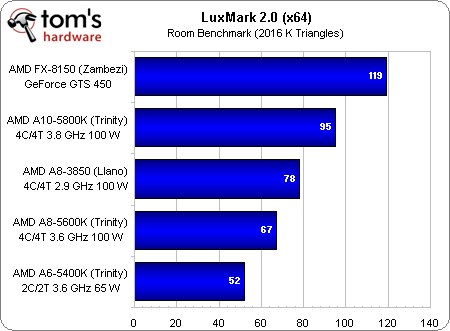
This strongly penalizes accelerator utilization and system energy consumption, as well as making it difficult to adapt applications.Ĭo-execution allows all devices to simultaneously compute the same problem, cooperating to consume less time and energy. Their complexity implies that they are usually used under the task paradigm and the host-device programming model. Heterogeneous systems are becoming increasingly relevant, due to their performance and energy efficiency capabilities, being present in all types of computing platforms, from embedded devices and servers to HPC nodes in large data centers. We carry out a number of experiments to isolate each RDNA feature and evaluate its impact on overall performance, as well as demonstrate the usability and flexibility of NaviSim.
#Apu opencl benchmark full
To demonstrate the full utility of the NaviSim simulator, we carry out a performance study of the impact of individual RDNA features, attempting to understand better the design decisions behind these features. Our evaluation shows that NaviSim can accurately model the GPU's kernel execution time, achieving similar performance to hardware execution within 9.92% (on average), as measured on an AMD RX 5500 XT GPU and an AMD Radeon Pro W6800 GPU. We extensively tune and validate NaviSim using several microbenchmarks and 10 full workloads. NaviSim faithfully emulates the new RDNA ISA. In this paper, we present the NaviSim simulator, the first cycle-level GPU simulator framework that models AMD RDNA GPUs. To date, no publicly-available simulator infrastructure can model the AMD RDNA GPU, preventing researchers from exploring new GPU designs based on the state-of-the-art RDNA architecture. The introduction of the AMD RDNA architecture is one example where the GPU architecture was dramatically changed, modifying the underlying programming model, the core architecture, and the cache hierarchy.

As GPUs continue to grow in popularity for accelerating demanding applications, such as high-performance computing and machine learning, GPU architects need to deliver more powerful devices with updated instruction set architectures (ISAs) and new microarchitectural features.


 0 kommentar(er)
0 kommentar(er)
